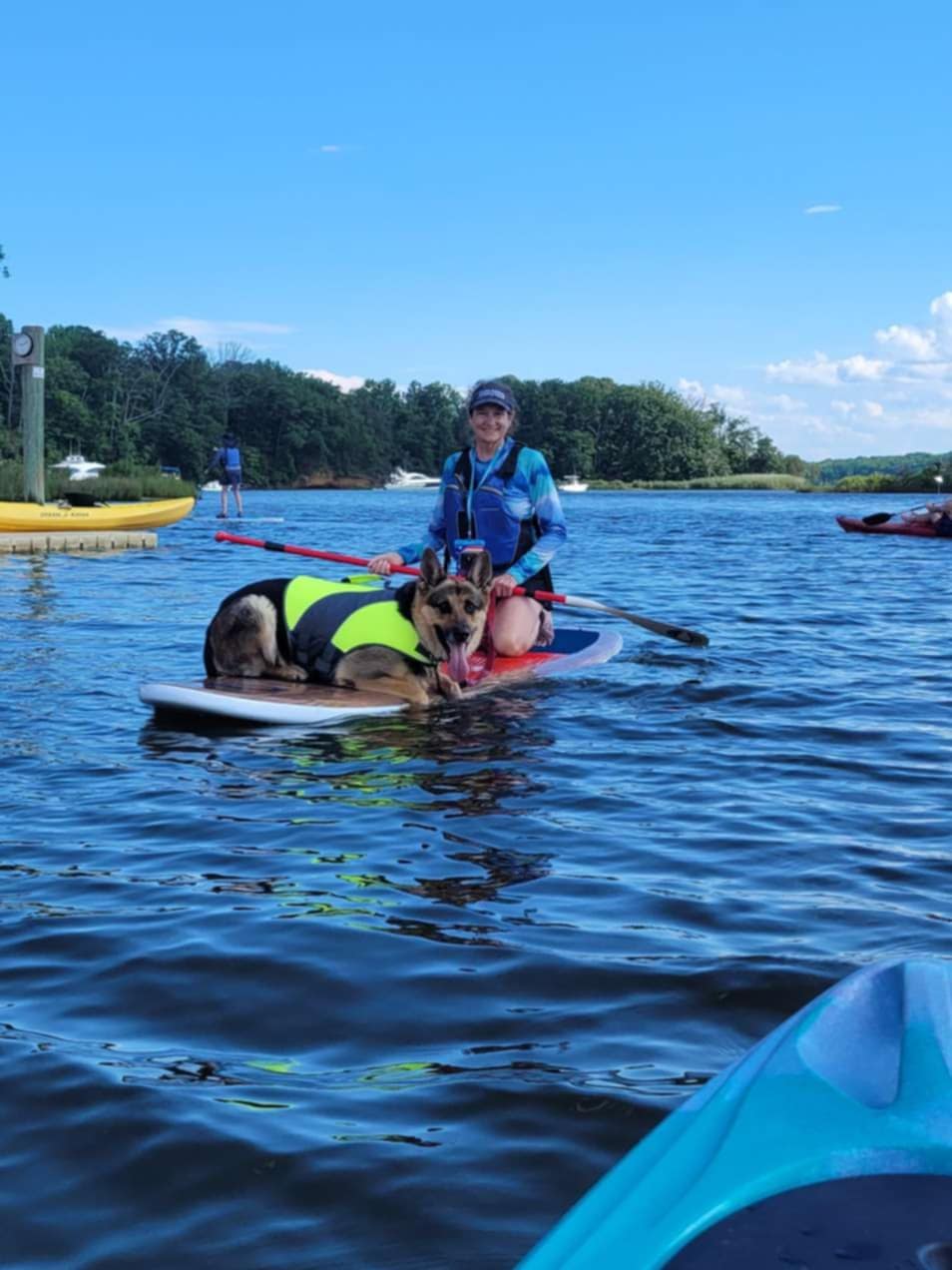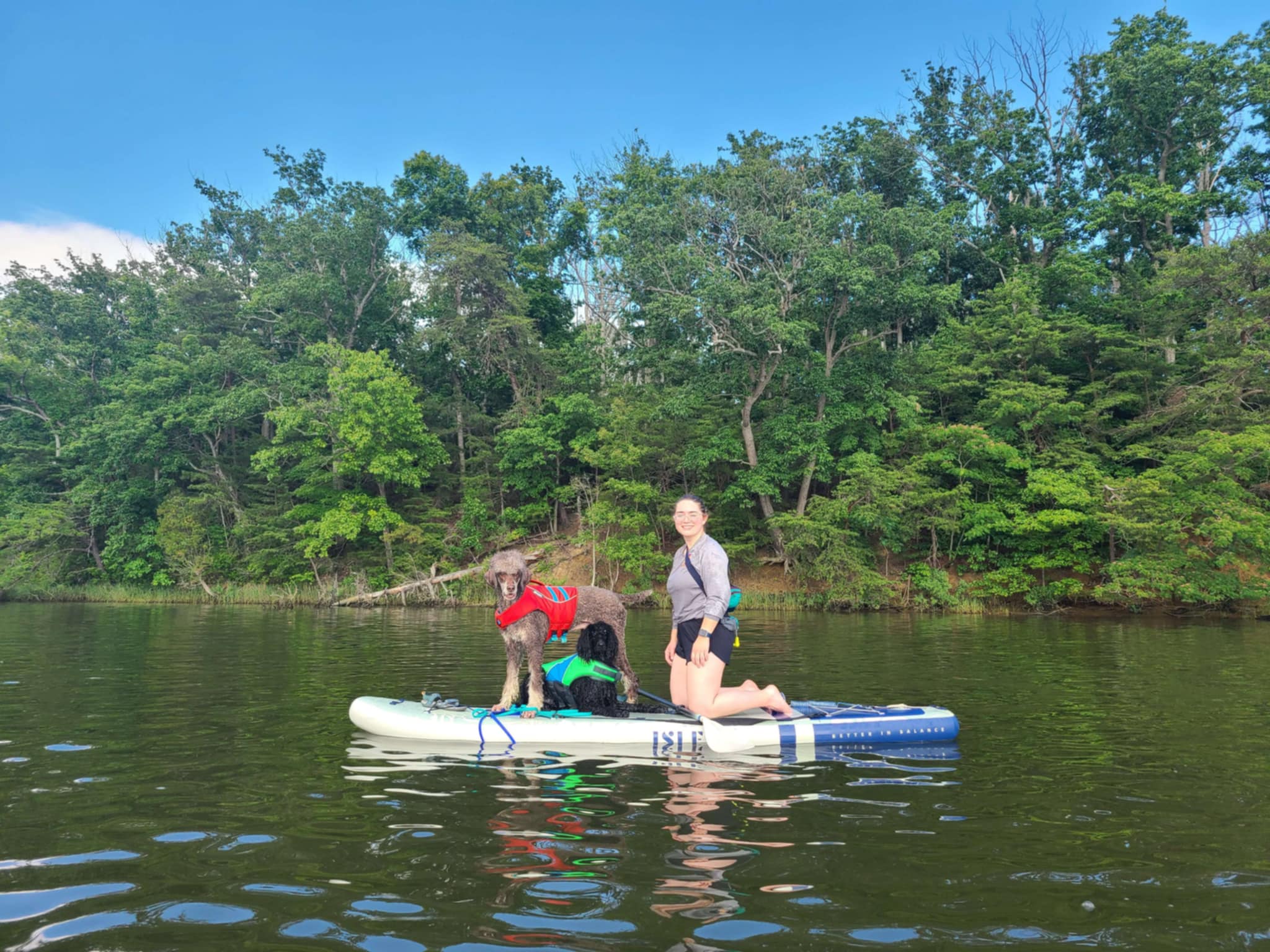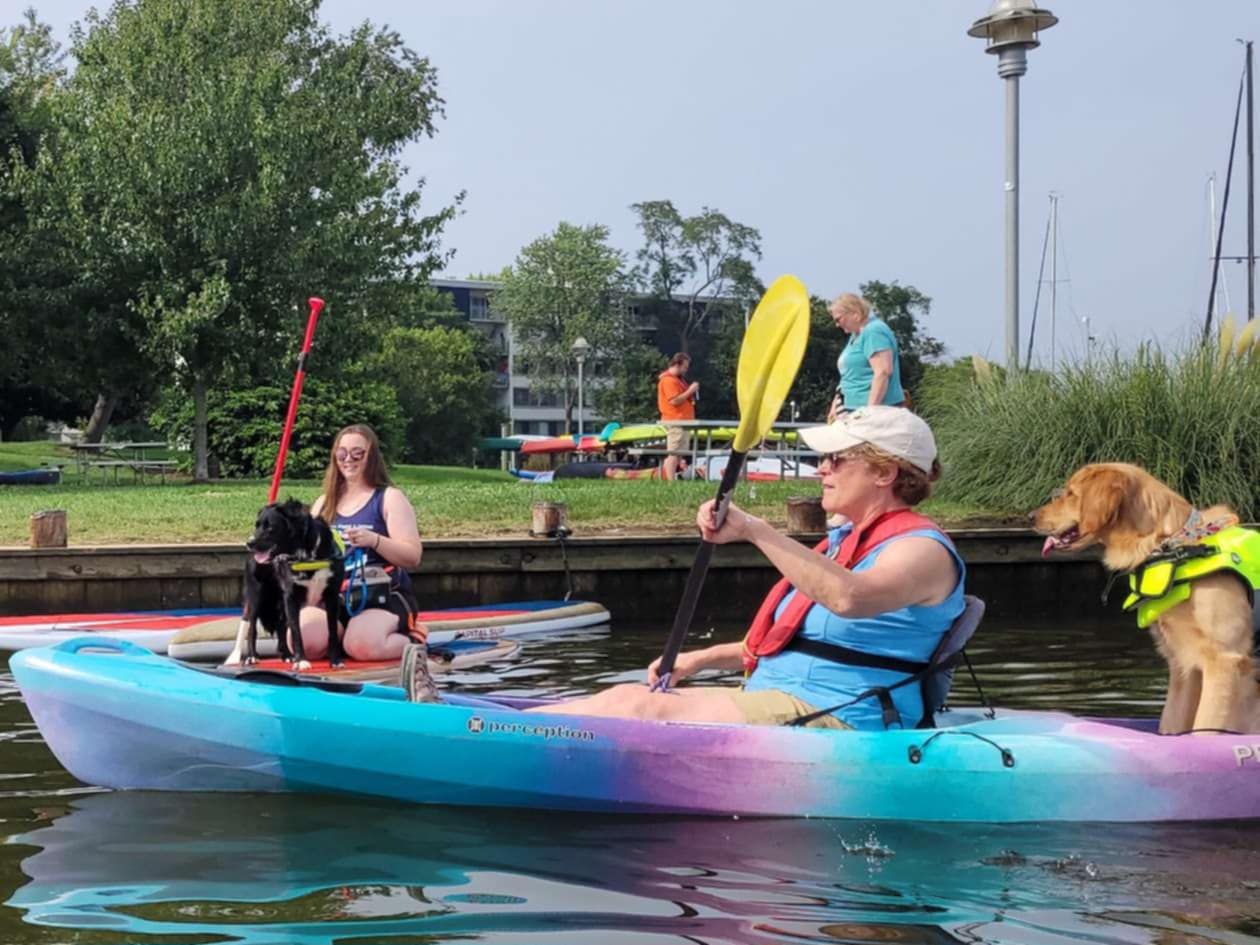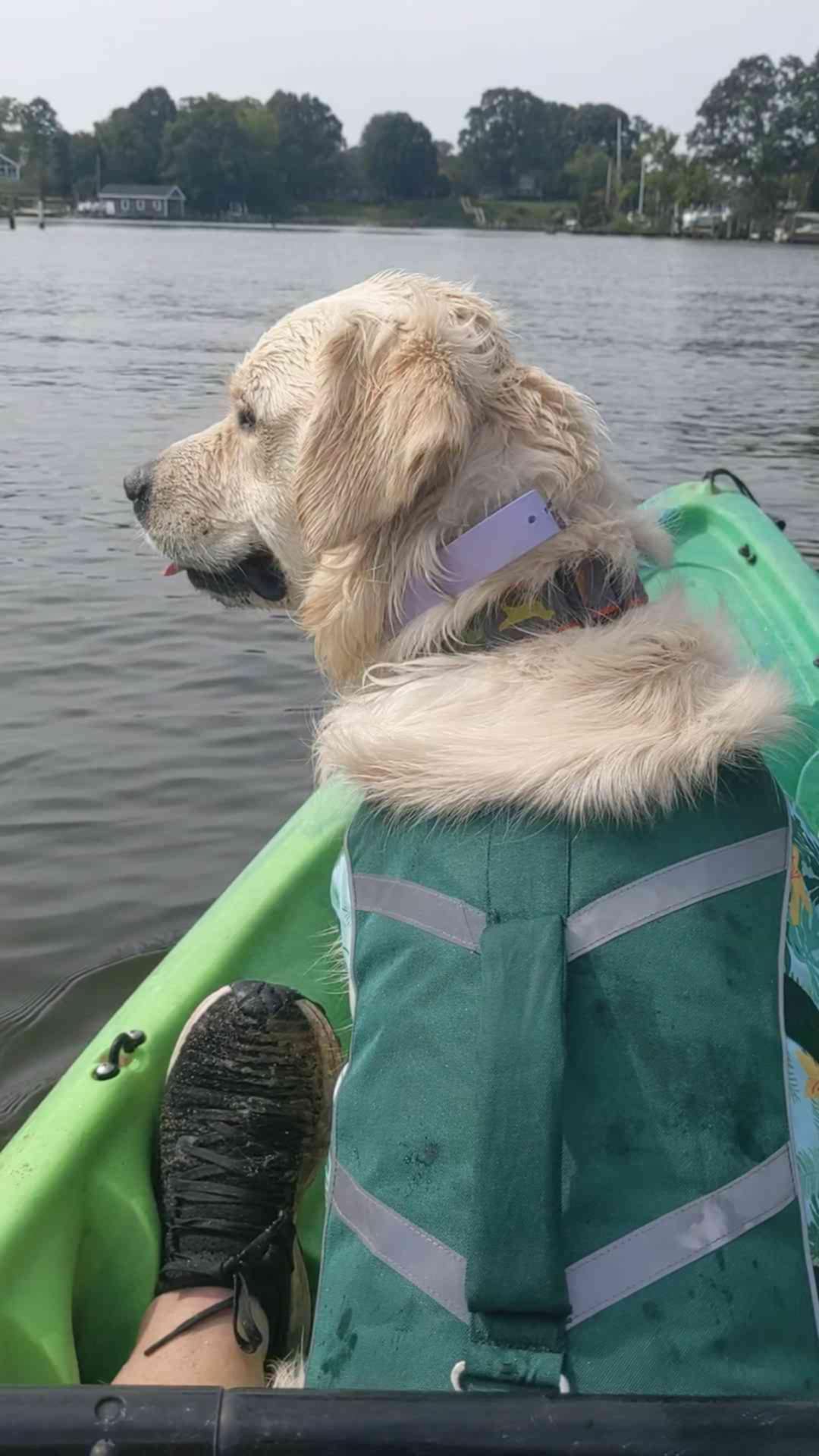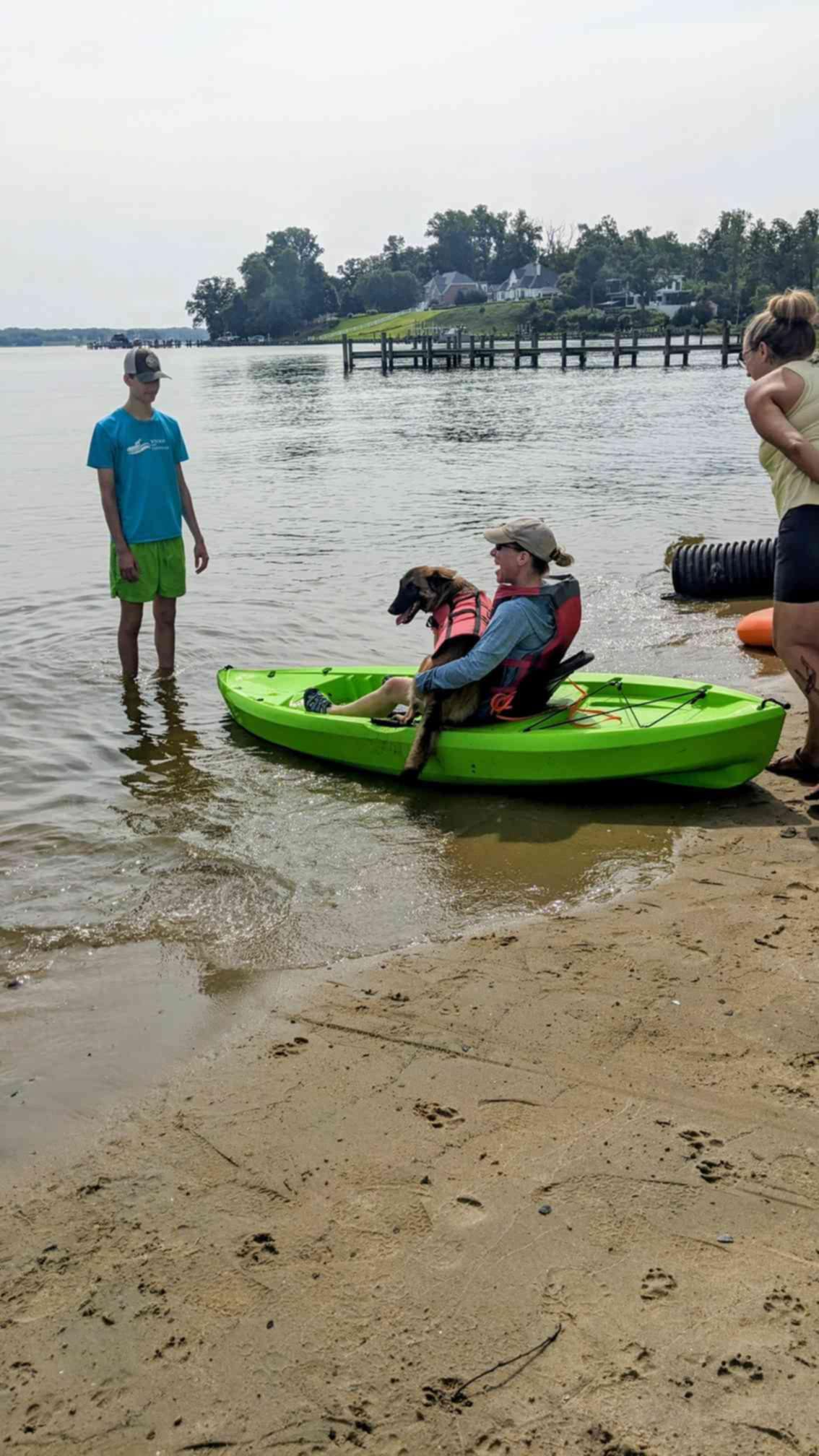This year our Leash Free Living camping trip is at a very paddle-friendly campground. With water access to both Lake Tuckahoe, and to Tuckahoe Creek, there are a couple of opportunities to get out on the water with your pup while we are camping later this month.
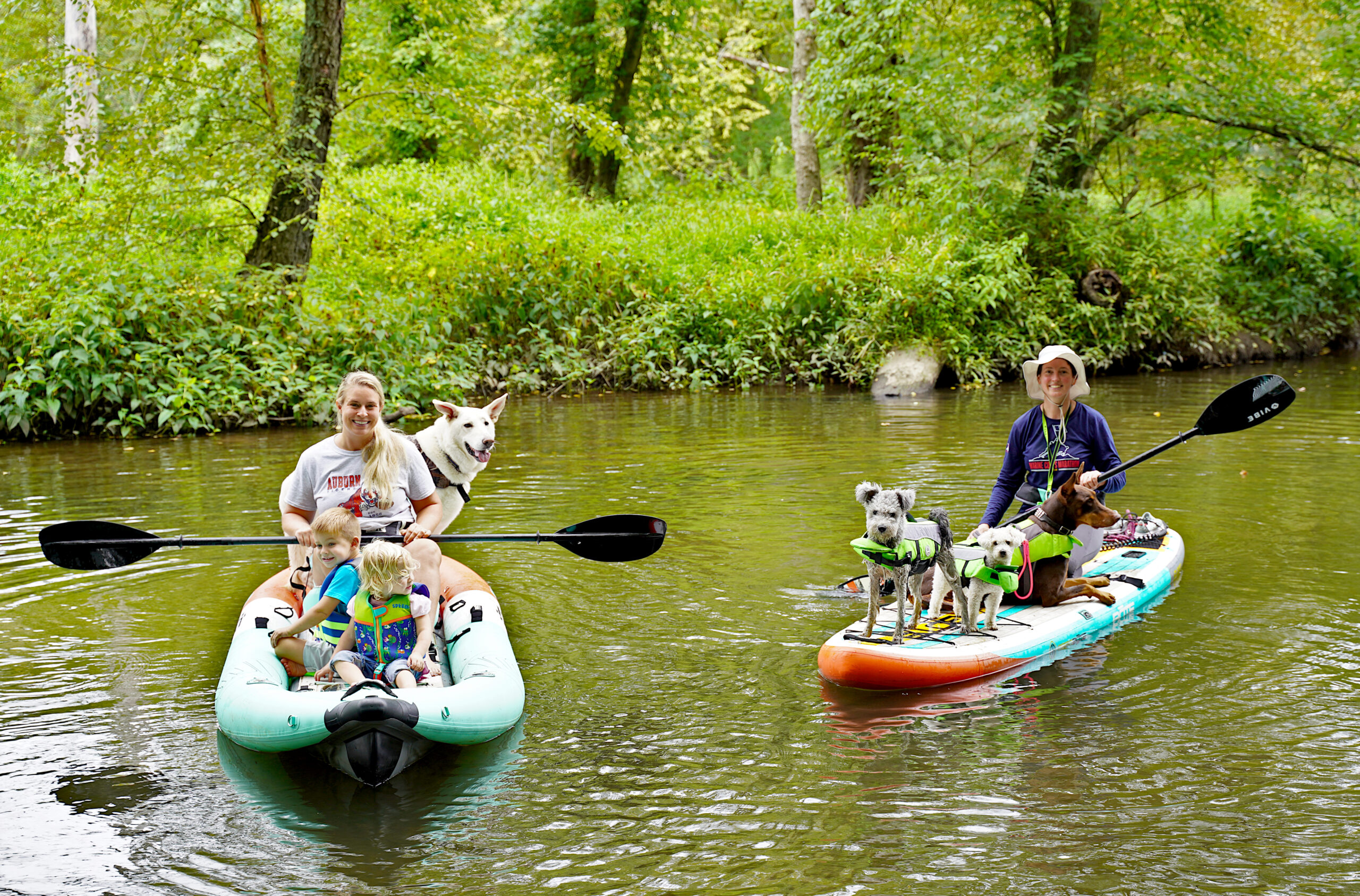
We want you to be fully prepared for paddling with your pup, should you wish to join us, so we’ve prepared a list of training skills and supplies that we would recommend for your paddle adventures.
Supplies
- Doggy Life Jacket – Since dogs come in so many shapes and sizes, it is best to order your dog their own life vest for water activities. Some boat rental companies offer a doggy life vest rental as an add-on to your SUP or Kayak rental (shout out Woof on the Wharf). That is rare however, so we recommend getting your own.
- Waterproof leash – The leash doesn’t need to be waterproof exactly, but bring a leash that you don’t mind getting wet at the very least.
- Waterproof Phone Pouch – You’re going to want to capture your dog while they are out on the water. A phone pouch can help keep your phone within reach for quick photos, and float-able pouches can keep your phone from sinking if you happen to drop it in the water too.
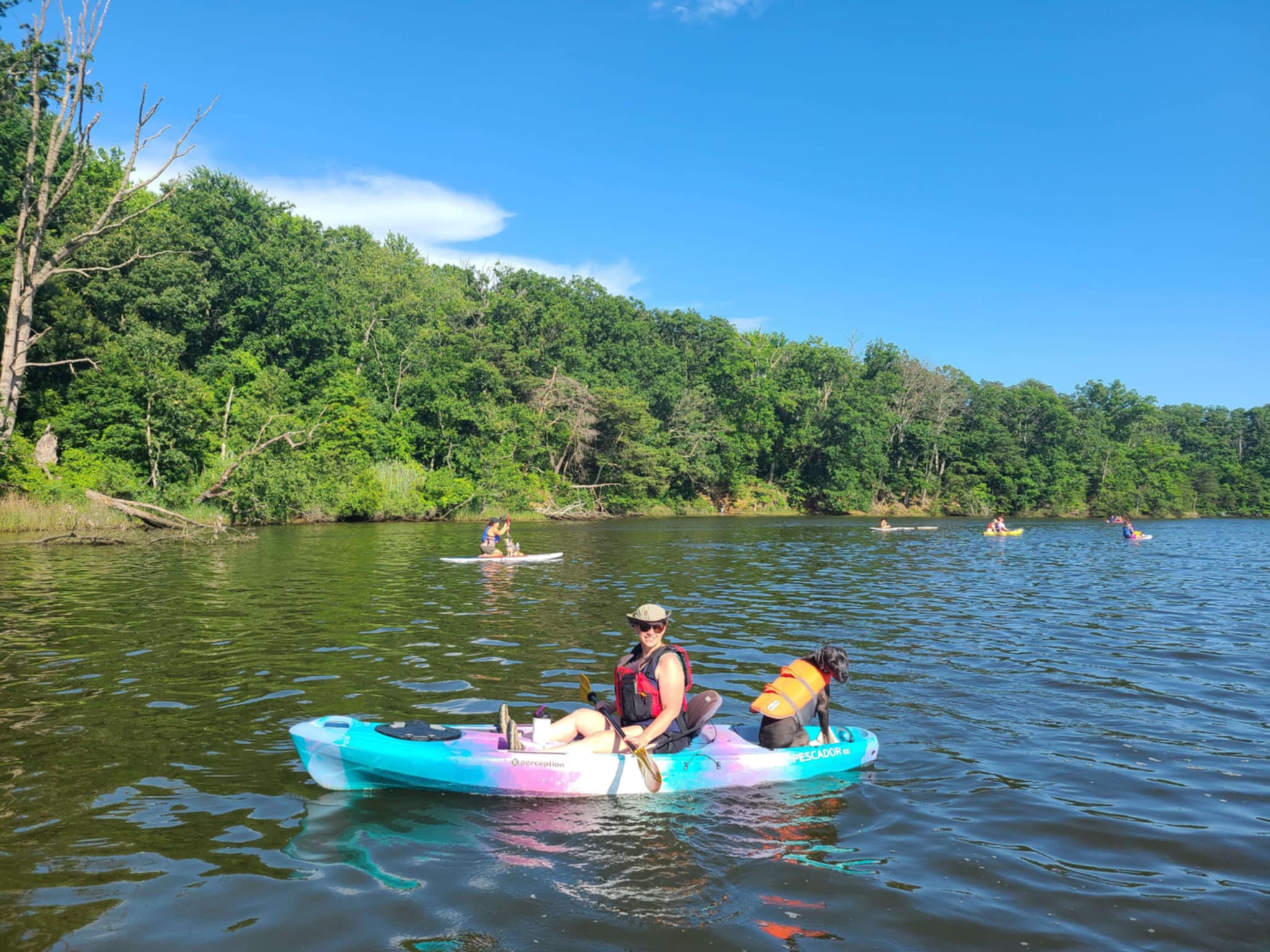
Training Skills
- Proprioception Skills – Water access may come in the form of a beach, or a dock, or a ramp. Make sure your dog is comfortable wading in water, walking on surfaces of various texture, and on surfaces that may be unsteady under their feet.
- Place – We use the place command (go to your/a spot) to get the dogs to join us on the board. Practice on a wide variety of objects so that your dog is comfortable getting onto anything you designated as the appropriate spot.
- Sit/Down – Once on the board, a sit or down command can keep the dog in place and minimize any extra rocking their movement may cause. This is especially important for large dogs that may tip you into the water if they are moving back and forth a lot. Remember that you may be kneeling, standing over them, or facing a different direction than the dog when you give the command. Practice Sit and Down under those conditions at home first so you are both prepared when you are out on the water.
- Recall – Should your dog fall off your board or boat, a good recall will be essential to getting them back to you. It will be very difficult to catch up to your dog if they leave the boat and head for land, and it might be quite dangerous if they head towards another paddler or boat in the water.
Leashes in the water : Conventional water safety calls for removal of all lines and leashes before playing in the water. I personally would weigh those risks against the risk of your dog leaving your board to swim away before making a decision. I’ve opted to leave leashes on with dogs that may need help getting on and off the board, settling into position once they are there, and with dogs that don’t have a strong recall.
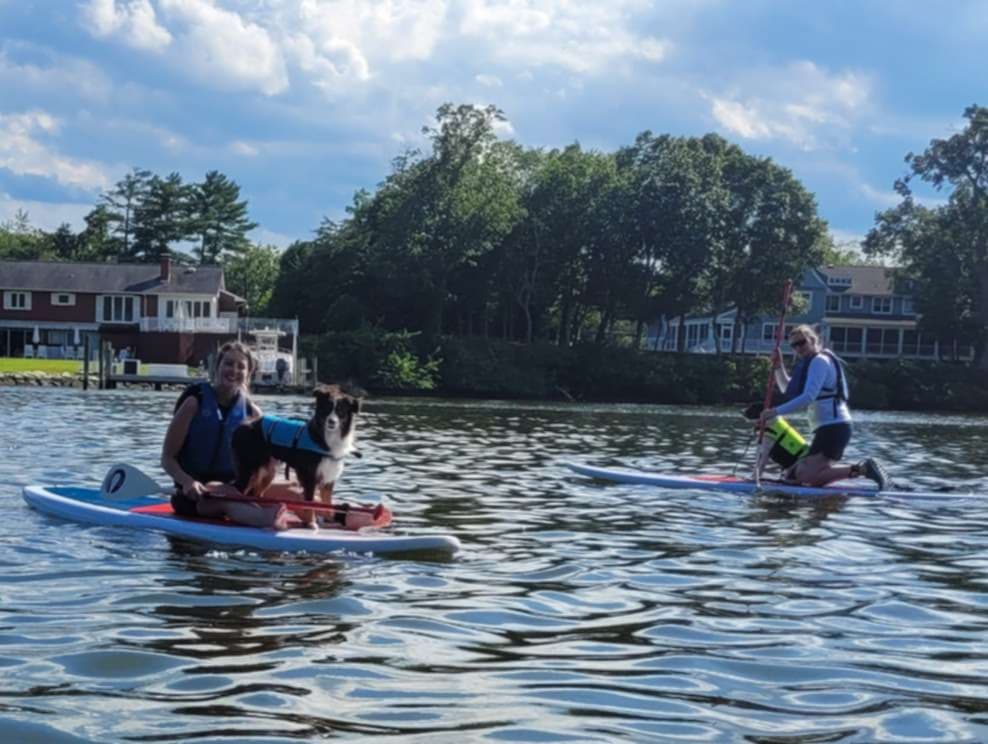
Distractions
While you are practicing your placing, stays and recalls, keep in mind some water specific distractions.
- Water – In many ways, dogs that DON”T like the water are much easier to paddle with because they have no intention of leaving your board. Dogs that like to swim may be tempted to take a dip. Sometimes that is perfectly fine, and other times that could be a hazard. Make sure your dog can resist the temptation to swim!
- Ducks – It is not uncommon to see ducks out on the water, and potentially to see small animals on the shore as well. Dogs with high prey drive may get overly excited in anticipation of chasing the animals.
- Splashing – Dogs that are particularly triggered by movement may be set off by the splashing that occurs when you paddle, or by other boats going by. Having some reliable tricks and training that you can ask them to do to help keep them settled will be very handy in those cases.
There is still camping space available for our upcoming trip to Tuckahoe State Park. Paddling with your pup is an optional activity, so if you aren’t quite ready to try it that is OK too! Head over to the client portal to reserve your spot for camping (the trip is free!). You can also check out our Dog Camping Essentials post to learn more about what things we like to have on dog camping trips!

